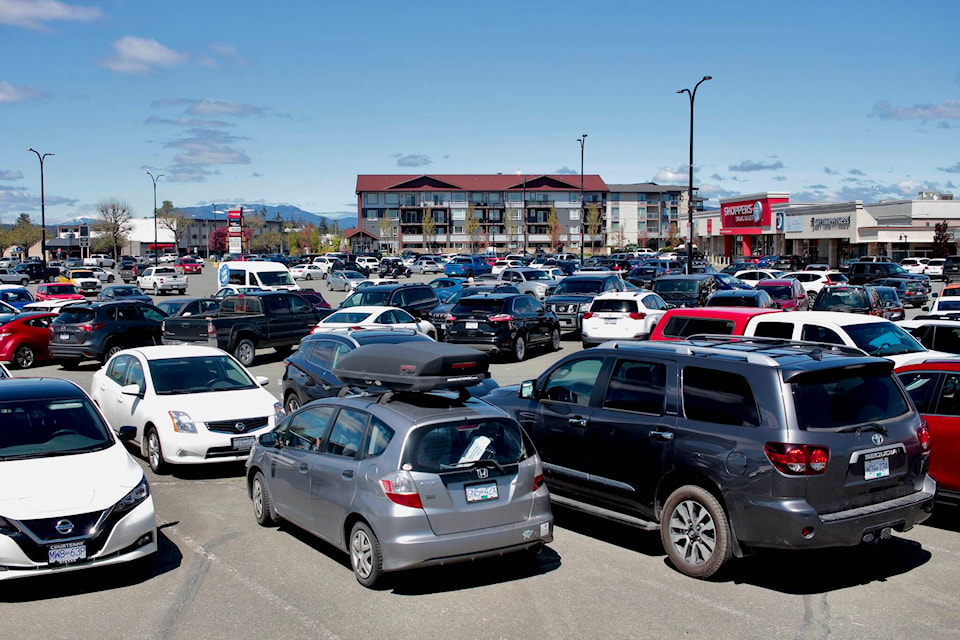Last week, the provincial government announced some new funding opportunities for communities to use for climate action, and we should use it to revitalize downtown.
The Local Government Climate Action Program (LGCAP) was set up to help reduce emissions and prepare for climate change. This isn’t the first such program, before it there was the Climate Action Revenue Incentive Program (CARIP), which had a few flaws. For example, governments only had to make “best efforts” to work towards carbon neutrality — which depending on your interpretation could really mean do nothing at all.
RELATED: B.C. communities to receive new annual climate action funding
Strathcona Regional District reports on progress towards carbon neutrality
With LGCAP, every community gets $37,726, with more added based on population. Official amounts have not been announced, communities of 12,000 get about $121,000 per year. We have 35,000 people, so we can expect even more. The program can be used for a lot of different things, which makes it exciting.
We should use it to transform downtown into a walkable city.
This is far from a new idea. Discussion around this has been going on for far longer than I have lived in the area. However, with this new funding, the potential for new faces on the city council this fall, an official community plan update coming in the distant future and urgency related to climate change, we need to really make this a priority.
I just took a walk downtown. There are plenty of people using this space, judging by the number of cars there. The thing is, I barely saw any actual people. There were a few folks on sidewalk, one person biked by and that was about it. Downtown is quite well-used, but unfortunately most of the space in the area is a parking lot.
If we want to increase the vitality of downtown, we need to increase people space and reduce car space. That means parking. I know it’s a good way to start a fight, but there’s a lot of evidence that says businesses benefit from more foot traffic. Besides, imagine how good driving will be for those that enjoy it once people who only drive because they have to are off the road? With a few planter boxes, some signage and patience, we can almost quadruple the width of the sidewalks, allowing more people to walk and bike in what is a very car-centric area.
Let businesses extend into parking stalls, provide more bicycle lock up spaces and more room to walk and we’ll see the change. The enormous parking lot that is Tyee Plaza should be walkable public space that people will actually enjoy. We can leave some parking spots open for emergency vehicles and for people with less mobility, but most of them can and should be gone.
Folks are still going to have to get into and out of downtown, so let’s use some of the money to improve the transit system. We could invest in some more buses over the next few years, have them run more often. There are already some pretty good bike routes into the downtown area. With some lanes blocked off for bike access, that can quickly be increased.
There are also some less used parking lots close to downtown that could be set aside for people who still want to drive.
From there we can set up a public bike share program with stations at bus stops and in those peripheral parking lots. While those are associated with bigger cities, they do exist and flourish in smaller centres. For example, Aspen, Colorado (population 7,000) just upgraded their system to include e-bikes. While I don’t have the space to go too far into this idea, a very good book called “Building the Cycling City: The Dutch Blueprint for Urban Vitality” does just that.
This, combined with recently-proposed ideas for increasing public art downtown could be a big change in how we use this area. We wouldn’t be the only community nearby to do this either, Courtenay just revamped its OCP with a large part of it dedicated to improving downtown.
I also have not mentioned climate change yet, which is the whole point of the funding.
Public transit drastically reduces the amount of trips needed by car, and having bike share programs that complement that would really reduce our transportation carbon footprint. Since this program is annual, we can afford to start small. We can build it up year over year until it is hard to remember when we did anything else.
RELATED: Arts groups want to dress up downtown with public art
